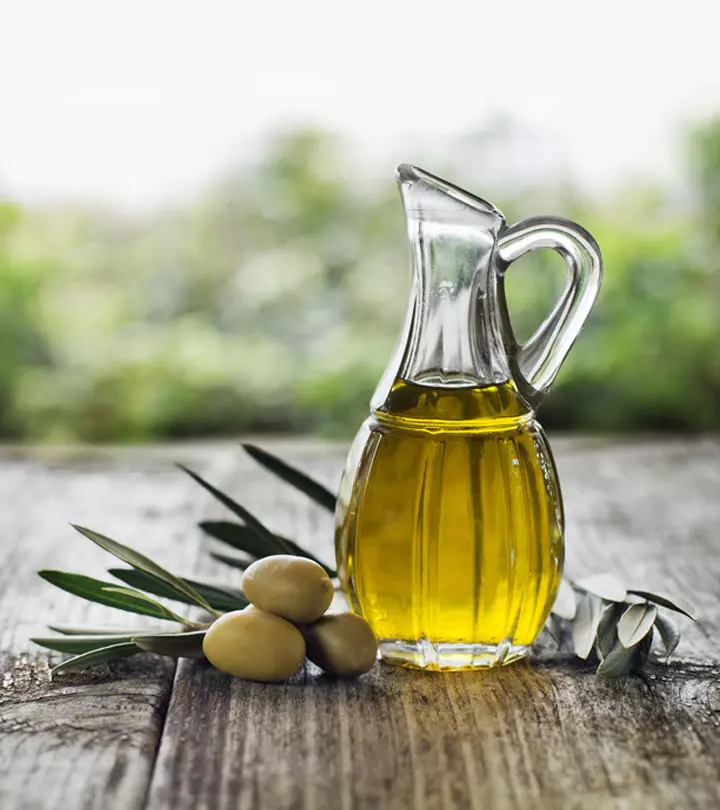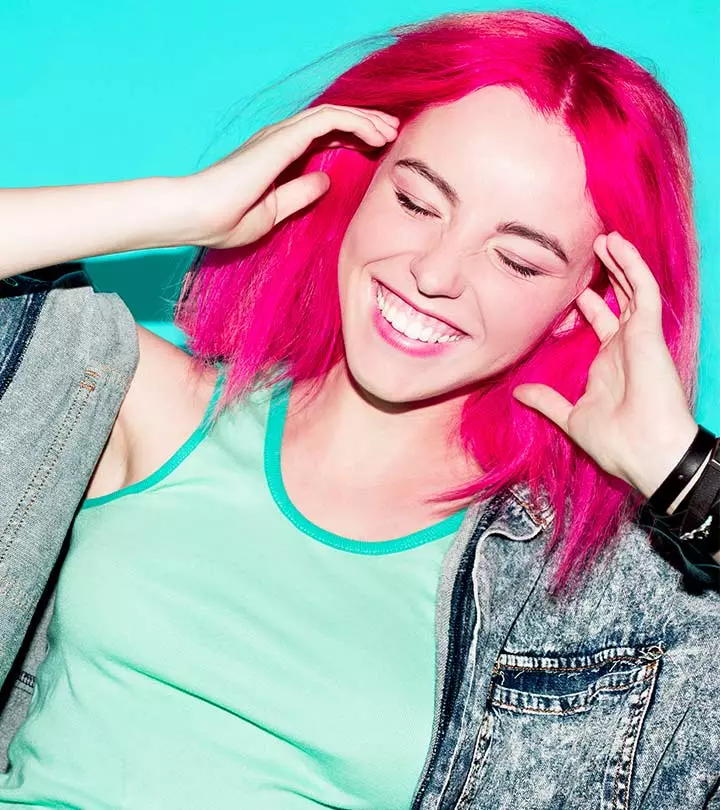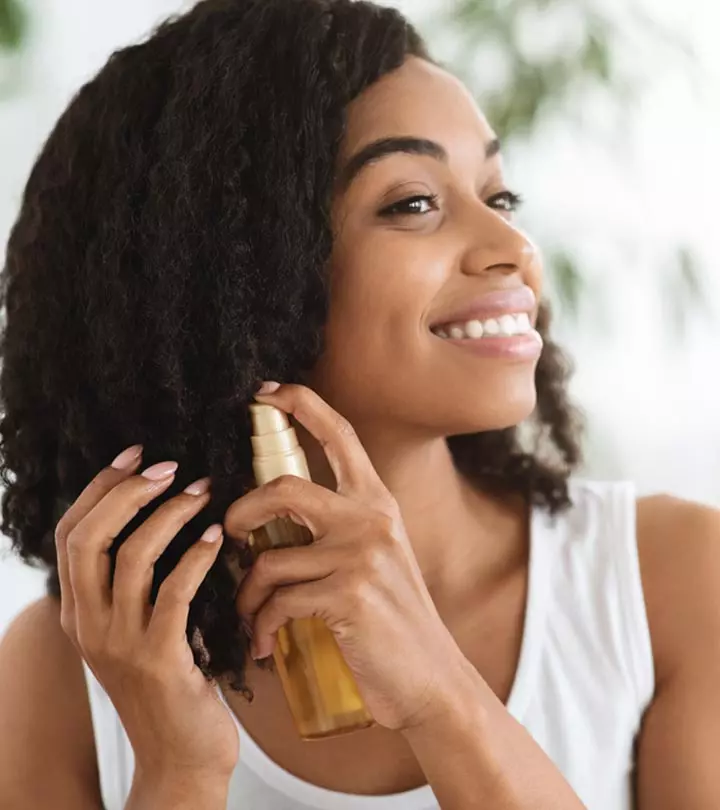Does Hair Dye Kill Lice? Facts, Risks, And Safe Alternatives
It may sound like an easy solution, but find out if it really works.

Image: Shutterstock
If you are setting out to get rid of head lice, you may encounter many tall claims. The idea that hair dye kills lice is one of them. Head lice infest your scalp and devour your blood, making it itchy and even causing hair loss. Therefore, any measure to prevent lice is greatly appreciated. Recent years have seen hair dye become one of the preferred prevention tactics. Our detailed explanation of how it works and how effective it is will answer any questions you might have. Continue reading to learn more.
In This Article
Does Dying Or Bleaching Hair Kill Head Lice?
Theories suggest that chemicals used to make hair dyes and bleaches are powerful enough to kill head lice. Semi- and demi-permanent hair dyes do not contain such strong chemicals. But permanent hair dyes and bleaching agents contain para-phenylenediamine, para-toluenediamine, para-aminophenol, and para-aminophenol paired with hydrogen peroxide and ammonia. These ingredients could be powerful enough to eliminate head lice. Hair bleach also contains ammonium persulfate, hydrogen, and stearyl alcohol that may help kill head lice. However, this information is mostly based on anecdotal evidence. More concrete research is warranted.
Key Takeaways
- Anecdotal evidence suggests that the strong chemicals present in permanent dyes and bleaching agents may help eliminate lice.
- However, these may not be effective on nits, owing to their hard shell casings.
- Using hair dyes frequently just to remove head lice may result in weak and dry hair, split ends, scalp irritation, etc.
Does Hair Dye Affect Nits?
Hair dye has strong chemicals. However, they may not be able to penetrate the hard shell casings of nits. The dyes and bleaching agents could be ineffective until the lice eggs hatch.
 Did You Know?
Did You Know?In the following section, we discuss how you can use hair dyes for lice removal.
How To Use Hair Dye For Lice Removal
Anecdotal evidence suggests that pairing hair dyes with vinegar may effectively eliminate head lice.
- Rinse your hair with a cup of vinegar diluted in a cup of water.
- Pour the solution over the scalp slowly, especially over the areas prone to lice (behind the ears, nape of the neck, etc.).
- Leave it on for about ten minutes and rinse with warm water.
- Comb your hair with a lice comb to remove as many head lice and nits as possible.
- Apply the hair dye, focusing more on the problem areas.
- Rinse the hair dye and remove any lice with the comb.
Another method is applying coconut and olive oils to your hair before using the hair dye. Some research shows that coconut oil may help remove head lice (1). Olive oil is also believed to have similar properties. In addition to these, you can also explore more oils for head lice prevention that can help keep the scalp healthy and infestations at bay. You can also pair these oils with antifungal essential oils like that of rosemary or peppermint to keep the scalp clean. Apply the oil blend to the scalp and use a lice comb to filter out any lice or nits. Wash your hair with warm water and apply the hair dye once your hair is damp. Comb your hair again. Repeat the process once a week for a few weeks.
 Quick Tip
Quick TipIt is important to be aware of the risks of hair dyes before using one.
Risks Of Using Hair Dyes
Hair dyes contain chemicals that can damage hair (2). These dyes are meant to penetrate the hair cuticle to remove or add hair color. This process leaves the hair open to damage. Using hair dyes frequently to eliminate head lice may cause hair breakage, split ends, dry hair, scalp irritation, inflammation, burning, and redness. The dyes may also lead to hair fall (2).
Some hair coloring agents also contain formaldehyde and parabens that may cause allergies or irritation (2).
Anita, a blogger, suffered from head lice infestation and tried a one-day treatment for head lice. She says “If you dislike taking unknown supplements or drugs into your system like me and prefer to ride out or naturally combat illness or anything that doesn’t imply total well-being of body, then I recommend my one-day treatment if you ever get the heavy itch. The good news about lices is that they can’t survive longer than a day or two on their own. So there’s no need to go on a cleaning binge, for fear of others contacting it. Simply wash, steam or soak directly affected items (i)”.
You may still use hair dyes to eliminate head lice. But limit your use to once a week or ten days. Keep in mind the following precautions too.
To minimize these risks, consider a natural remedy for lice with henna paste instead of chemical dyes. Check out the next section to learn more.
Henna Paste For Killing Lice
Henna paste is a traditional remedy believed to naturally combat lice. When applied to the scalp and hair, its antimicrobial properties may suffocate and eliminate lice and the eggs. Furthermore, the paste’s thick texture also impedes lice movement. While anecdotal evidence supports its efficacy, scientific validation is limited. Therefore, caution is advised, especially because henna can affect hair color. Consider individual sensitivities and conduct a patch test before use, or consult a healthcare professional for personalized advice on using henna as a lice treatment. While a natural option, its effectiveness may vary among individuals, and should not be solely relied on for comprehensive lice management.
Safety Precautions
- Do not use hair dyes or bleaching agents to remove head lice or nits in children. Consult a doctor for the right treatment method for your child.
- Wear required protective gear when using hair dyes or bleaching agents.
- Nourish your hair with oil massages between hair dye applications. This keeps your hair from drying out.
- Wash your hair with lice-treating shampoos that can further help eliminate head lice.
Head lice consume your blood, make your scalp itchy, and even cause hair loss. There are so many remedies to get rid of head lice, and using hair dyes is one of them. The harsh chemicals present in permanent hair dyes and bleaching agents are believed to be effective ways to kill head lice. Though there is no scientific evidence to prove hair dyes kill head lice, many use it for the same. Following the steps mentioned above can help you learn how to use it for lice removal. However, this is not a long-term solution. You may consult your doctor for a better option.
Frequently Asked Questions
Can lice survive a hair dryer?
No. From studies, 30 minutes of blow drying with a normal hair dryer aimed at the base of the hair was found effective in killing lice (3).
Can hairspray kill lice?
No. Non-medicated formulations like hair sprays, shampoos, or gels are not effective in killing lice.
Does conditioner smother lice?
Hair conditioners do not kill lice but they stun them for about twenty minutes. You can then use any long-toothed comb to remove those stunned lice.
What happens if lice are left untreated?
Untreated lice can lead to an infection that may spread to the lymph nodes. This infection needs to be treated with a strong course of antibiotics.
Uncover a safer technique and alternative solutions that efficiently address head lice worries without resorting to harmful techniques. The video shares critical insights and expert recommendations from doctors; watch it out now!
Personal Experience: Source
StyleCraze's articles are interwoven with authentic personal narratives that provide depth and resonance to our content. Below are the sources of the personal accounts referenced in this article.
(i) HOW TO CURE HAIR LICES IN ONE DAY.https://anitaezennia.medium.com/hi-there-im-anita-nice-to-meet-you-again-b3efc22bbf4b
Read full bio of Dr. Rekha Yadav
Read full bio of Anjali Sayee
Read full bio of Eshna Das
Read full bio of Monomita Chakraborty




























Community Experiences
Join the conversation and become a part of our empowering community! Share your stories, experiences, and insights to connect with other beauty, lifestyle, and health enthusiasts.